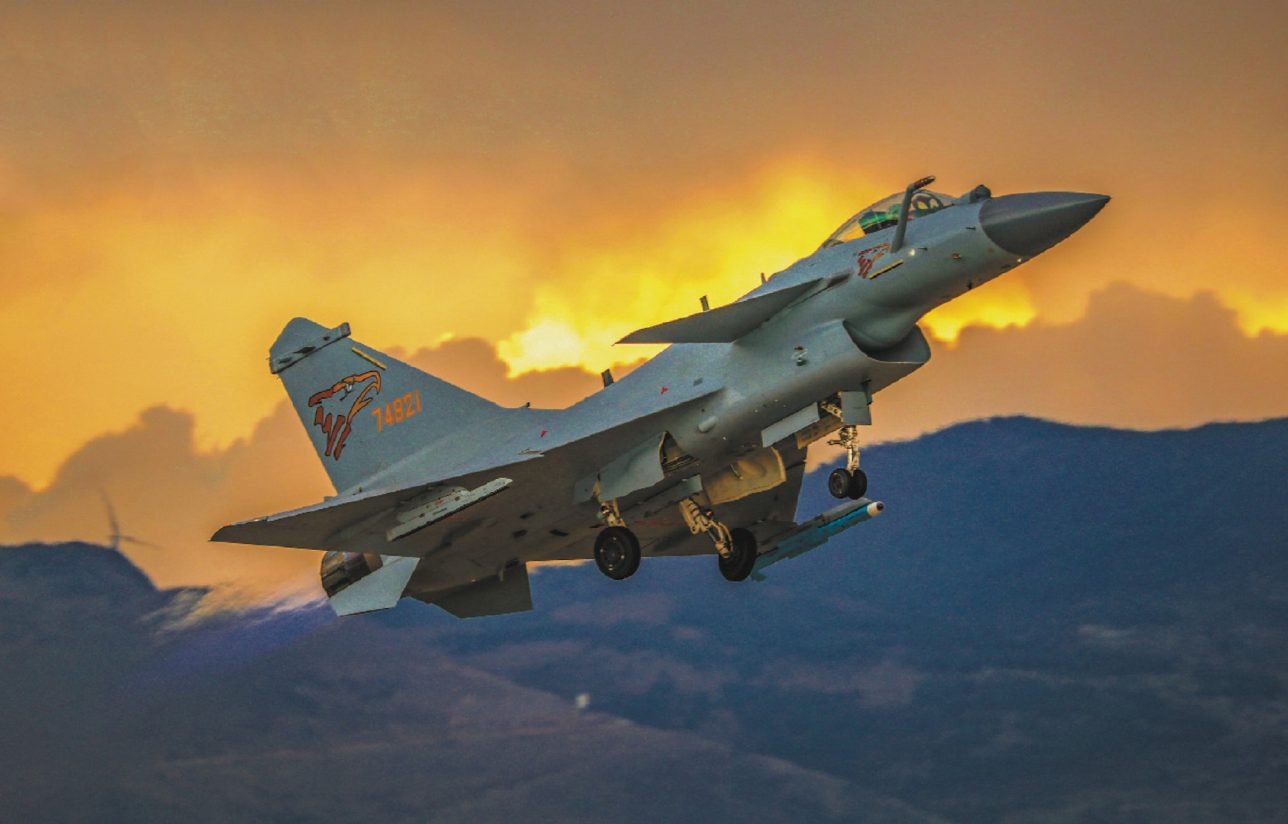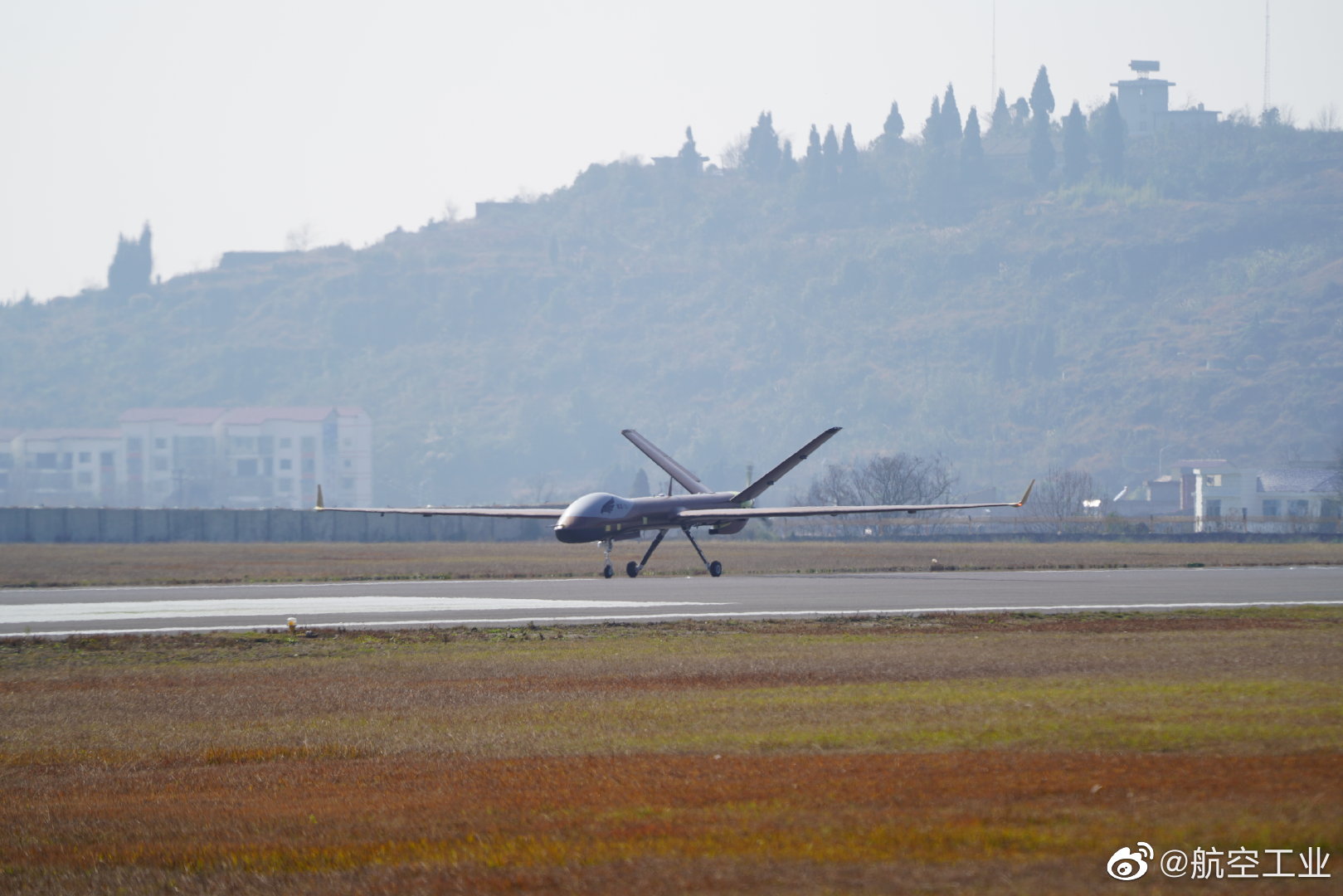China has conducted an exercise to simulate a dogfight between a manned and unmanned aircraft. According to reports, Chinese researchers claimed to have built an AI-based system capable of teaching combat drones to win dogfights, and are thousands of times faster than comparable US technology.
Xi Jinping’s Top Advisor Says China Can Launch Invasion Of Taiwan By 2027, Restrict US Navy Within 1,000 Nautical Miles
The researchers wrote in the domestic peer-reviewed journal Acta Aeronautica et Astronautica Sinica on January 28 that the faster learning speed could help the drone detect “cheating maneuvers” by human pilots, reduce the workload on a computer chip, and outperform opponents in complex, large-scale air combat.
“The algorithm in this paper can be extended to an air combat with multiple AI [artificial intelligence] agents, which will be closer to the real situation in a battlefield,” the researchers at the China Aerodynamics Research and Development Centre in Mianyang, Sichuan province, said. The system was put to the test by simulating combat between a drone and a jet fighter.
This development comes a little less than two years after the US Defense Advanced Research Project Agency (DARPA) conducted a similar exercise. According to its website, DARPA’s event was a three-day competition “intended to demonstrate advanced algorithms capable of performing simulated, within-visual-range air combat maneuvers or, a dogfight.
In the exercise, a graduate of the US Air Force Weapons School’s F-16 Weapons Instructor Course was beaten five times in a row by an AI-driven pilot in simulated air-to-air combat.
The AlphaDogfight Trials have concluded! Congratulations to Heron Systems whose AI agent won the championship among the systems competitors and then beat our F-16 pilot in five straight simulated dogfights in the man-vs-machine finale. The event is here: https://t.co/MRvwUmpgj6 pic.twitter.com/ad47YvMe5Z
— DARPA (@DARPA) August 20, 2020
Further, the current exercise that incorporated AI to teach a dogfight to combat drones might not be the first time China has done something like that. Last year, the Chinese PLA Central Theater Command Air Force simulated a dogfight in which a highly experienced pilot was shot down by an AI-driven aircraft, as previously reported by the EurAsian Times.
At the time, China’s state media Global Times quoted a report by PLA Daily, the Army’s official newsletter, on the simulation exercise. However, it did not specify which aircraft were employed in the exercise.
China’s Dogfighting Skills Better Than The US?
AI systems were tested against F-16 fighter jet pilots in a similar competition in the United States. Maryland-based Heron Systems emerged victorious in the AlphaDogfight trials. The Heron system had vanquished the pilots in all five dogfights, requiring more than 4 billion rounds of “training”.
However, in stark comparison, according to the Sichuan researchers, it only took “800,000 simulations” for the Chinese system to win the majority of its battles, stated SCMP.
Previously, skilled pilots used a deep dive as last resort to send the drone plummeting to the earth in simulated warfare. However, the new AI foresaw the trap and pulled up at the last second while holding on to the opponent’s tail, according to lead author Huang Jiangtao and his colleagues.
The original technique to machine learning, according to Huang, was wasteful since the computers simply repeated the training rounds “blindly”, with each new session based on random data created by prior exercises. Since much of the data was useless, it may take a very long period for a computer to improve its performance.
According to Huang, their new AI system was discriminating, selecting only the best data for the following round.
Despite the fact that the deep reinforcement learning model they utilized was comparable to those used by Heron and others, the selection method produced a significant difference in the AI’s learning curve.
For reasons provided by the chief author, the Chinese simulation match could have performed better than that of the United States. China seems to have figured out the deficit in the technique that allowed it to achieve similar results in significantly lesser simulations.
China’s AI Breakthrough
According to Huang, the machine was already flying steadily like a pro after only 80,000 rounds of training. In one simulated battle utilizing J-10 fighter jets, a pilot had an advantage in the first 30 seconds, but the hunt abruptly turned and he couldn’t shake the machine for more than 12 minutes.

Drones are projected to play an increasing role in defense as has been demonstrated in various conflict zones around the world in recent times.
The country’s current defenses are vulnerable to very inexpensive US drones equipped with next-generation stealth technology, which may disable the Chinese military’s centralized command systems.
According to air force researcher Major General Fei Aiguo, in response, the People’s Liberation Army has begun decentralizing parts of its combat troops and insuring flexibility against a potential US invasion with the use of similar AI-powered drones.
However, Fei and his colleagues stated in a report published in the journal, Command Information System and Technology in October that the AI system needed to increase its capabilities and learn faster from the continuously changing environment.
The majority of military drones are built for surveillance, early warning, communication, or attack on ground targets. According to certain military specialists, these systems cannot manage fast-paced, sophisticated actions like dogfights since a great amount of calculation must be done quickly.
Another issue is that most military computer chips were designed with slower, more conservative technology to withstand difficult environments such as intense heat, pressure, and electromagnetic jamming.
China coming out with regulations & guidelines for AI & emerging tech on a regular basis.
Yesterday CAC released draft rules for "deep synthesis technology," which is "generative synthesis algorithms represented by deep learning and VR to produce text, images, audio, video, etc"— Rui Ma 马睿 (@ruima) January 28, 2022
The Chinese military AI program’s major goal is to create new algorithms that can extract high performance from a slow machine.
China’s drone industry has seen a boom in recent times as its combat drones have found popularity among foreign buyers. Just a few days ago, China’s Combat-capable & Intel-gathering WJ-700 Drone took to the skies for the first time, as reported by EurAsian Times.

Chinese drones have gained significant popularity around the world, particularly in the Middle East, which has emerged as the largest customer of Chinese Wing Loong UAVs. The Wing Loong 1E, a new variant made completely of composite materials, has also joined the Wing Loong family. Interestingly, it is being compared with the American Grey Eagles by military watchers.
As Chinese researchers create more advanced AI systems, even better results could be achieved in drone dogfights in the future.
- Contact the author at sakshi.tiwari9555@gmail.com
- Follow EurAsian Times on Google News




